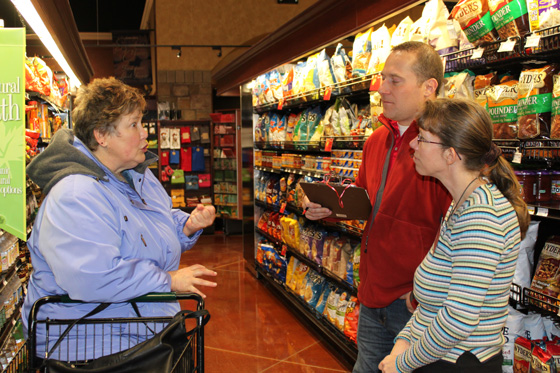 Beyond the nutrition label, our food packaging is filled with words, phrases and numbers. Do you know what they mean?
Beyond the nutrition label, our food packaging is filled with words, phrases and numbers. Do you know what they mean?
Food Product Dating
Sell-by date – tells the store how long to display the product for sale. You should buy the product before the date expires.
Best if Used By (or Before) – recommended for best flavor or quality. It is not a purchase or safety date.
Use-By – the last date recommended for the use of product while at peak quality. The date has been determined by the manufacturer of the product.
Closed or Coded Dates – packing numbers for use by the manufacturer in tracking their products. This enables manufacturers to rotate their stock as well as locate their products in the event of a recall.
Sorting Out Food Terms
Antibiotic-free
*USDA regulations say meat and poultry products can be labeled as “no antibiotics added” if documentation is provided. Similar allowable terms from USDA are “no antibiotics ever,” “no added antibiotics” and “raised without the use of antibiotics.”
*“Antibiotic free” is not USDA approved.
Cage-free
*USDA regulations define cage-free as laying hens living uncaged, typically within a barn, warehouse, building or other enclosed area. They must have unlimited access to food and water and the freedom to roam within the enclosed area during their egg-production cycle.
Certified humane
*This term is not regulated by the USDA.
Chemical-free
*This term is not allowed on meat or poultry labels by the USDA.
*Federal regulations don’t allow the terms “residue-free,” “residue tested,” “naturally raised,” “naturally grown” or “drug-free.”
Free range or free roaming
*USDA regulations applies this term only to poultry raised for meat.
*The USDA doesn’t define free range in terms of beef, pork or other non-poultry animals, so if you see this term on these products, keep in mind that it has no standard meaning.
Grain fed
*USDA regulates this term only as far as what products actually count as grain for feed.
Grass fed
*USDA regulations state that grass fed means that grass and forage are the feed source for ruminant animals (such as cattle, sheep, bison and llamas) for the duration of their life after weaning.
Hormone-free
*USDA does not allow this term on meat products.
*Federal regulations prohibit the use of hormones in the raising of poultry, hogs, veal calves or exotic animals not subject to USDA inspection, such as bison.
Natural
*USDA regulations states this term may be used on labeling for meat and poultry products if the product doesn’t contain any artificial flavor or flavoring, coloring ingredient or chemical preservative or any other artificial or synthetic ingredient; and if the product and its ingredients are not more than minimally processed.
Naturally raised
*This is a voluntary marketing claim that manufacturers can choose to use on labels of meat and meat products.
Pasture raised
*This term, sometimes referred to as “access to pasture,” is regulated as part of the National Organic Program of the USDA.
Vegetarian fed
*This term is not regulated by the USDA.
Click here for more information.
Source: Food Marketing Institute and Mayo Clinic













The terms which are given in this page is not familiar for me. But I have seen these terms on the food packaging label. Now I understood the meaning of all these terms,and it’s regulations. Thanks for your effort.